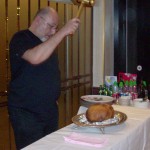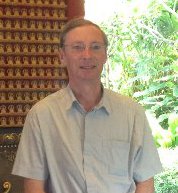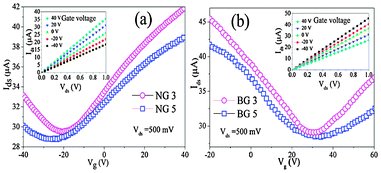Faces behind the research: Learn more about some of our authors of the April issue of NJC and check out their latest entries.
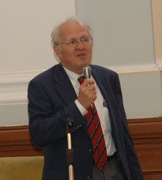 Prof. Robert Bruce King is Regents’ Professor Emeritus at the University of Georgia, USA. He is currently directing a research program directing collaborators spread over three continents. He works with large research groups in Romania at Babeş-Bolyai University (Cluj-Napoca) and in China at South China Normal University (Guangzhou) and Xihua University (Chengdu) where he has adjunct academic appointments.
Prof. Robert Bruce King is Regents’ Professor Emeritus at the University of Georgia, USA. He is currently directing a research program directing collaborators spread over three continents. He works with large research groups in Romania at Babeş-Bolyai University (Cluj-Napoca) and in China at South China Normal University (Guangzhou) and Xihua University (Chengdu) where he has adjunct academic appointments.
His research interests are computational inorganic and organometallic chemistry. The paper to be published in NJC deals with using density functional theory to explore the chemistry of boronyl (BO) analogous of the simple metal carbonyls. The work describes the interesting structures of Fe2(BO)2(CO)8 isoelectronic with the well-known dimanganese decacarbonyl.
“This paper is of broad interest to both inorganic and physical chemists, therefore a general journal such as NJC appeared to be the most suitable journal for this paper” commented Prof. King on choosing the NJC journal to publish this work.
When asking which scientific problem he would like to solve: “I am much more oriented towards exploring uncharted territory rather than solving specific problems. Early in my career, I found the synthesis of new molecules exhibiting novel structural features to be very exciting. Nowadays, I am particularly enthusiastic about generating new types of molecules in silico on the computer using well-established density functional theory methods arising from quantum chemistry”.
Binuclear iron boronyl carbonyls isoelectronic with the well-known decacarbonyldimanganese by Yu Chang, Qian-Shu Li, Yaoming Xie, R. Bruce King and Henry F. Schaefer III, New J. Chem., DOI: 10.1039/C2NJ20894F
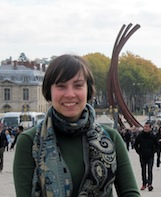
Jana Juan-Alcañiz is a PhD student at the Delft University of Technology in the Netherlands. Jana is working in the field of heterogeneous catalysis and her current research interests are metal-organic frameworks as nanoreactors.
In their NJC paper, Jana and her colleagues focused on “a ship in a bottle” approach that has been followed to successfully encapsulate phosphotungstic acid in the metal-organic framework MIL-100(Cr). The influences of the synthesis conditions, like solvent effect or irradiation methods have been investigated to achieve efficient one-pot encapsulation maintaining the chemical nature of the guest species.
Solving the low efficiency of renewable energy sources is a scientific problem that Jana would like to solve.
Towards efficient polyoxometalate encapsulation in MIL-100(Cr): influence of synthesis conditions by Jana Juan-Alcañiz, Maarten G. Goesten, Enrique V. Ramos-Fernandez, Jorge Gascon and Freek Kapteijn, New J. Chem., DOI: 10.1039/C2NJ20587D
 Our next author is Dr. Eliano Diana, an Associate Professor of General and Inorganic Chemistry at Faculty of Sciences M.F.N., University of Turin, Italy. His research interest centers on the evaluation of bond properties and intermolecular interactions in metal complexes by means of vibrational spectroscopies and computational modeling.
Our next author is Dr. Eliano Diana, an Associate Professor of General and Inorganic Chemistry at Faculty of Sciences M.F.N., University of Turin, Italy. His research interest centers on the evaluation of bond properties and intermolecular interactions in metal complexes by means of vibrational spectroscopies and computational modeling.
Eliano’s contribution to this April issue of NJC reports the experimental data concerning atypical hydrogen bonds found in organometallic salts and tried to explicate it with a multidisciplinary approach.
When asking why did he decide to submit this work to NJC, Eliano answered: ”Because of the good quality of the Journal, the cross-disciplinary spread and the excellent editorial support”.
If Eliano could solve any scientific problem: “I’d eliminate the HIV virus”.
Blue and red shift hydrogen bonds in crystalline cobaltocinium complexes by Eliano Diana, Michele R. Chierotti, Edoardo M. C. Marchese, Gianluca Croce, Marco Milanesio and Pier Luigi Stanghellini, New J. Chem., DOI: 10.1039/C2NJ20760E
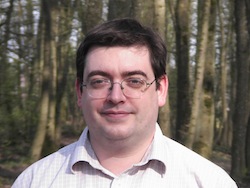
Dr. Sébastien FLOQUET holds an Associate Professor position at Institut Lavoisier de Versailles, University of Versailles, France. His research activity is currently concentrated on synthesis and characterization of polyoxo(thio)metalates.
In their NJC paper, Sébastien and his collegues highlight the liquid crystal properties of a famous nanoscale polyoxometalate, i.e. the “Keplerate” compound [Mo132O372(CH3COO)30(H2O)72]42- surrounded by 36 DODA+ cations. “In this field of research, the results we present here opens the route towards the formation of new mesomorphic phases based on very large inorganic clusters simply by ionic association with appropriate organic cations”.
“New Journal of Chemistry is a European journal co-edited by RSC and the French CNRS. Futhermore NJC publishes articles focused on all domains of chemistry, the colored figures are free of charge and NJC possesses a good impact factor, which probably will increase in the future” explains why Sébastien and his colleagues consider that their work is particularly suitable for NJC.
“In my opinion, environmental and energetic problems constitute the main challenges for chemists today. The synthesis of highly efficient materials for hydrogen production, CO2 conversion or pollutant reduction are probably the most exciting challenges I would like to solve”.
Evidence of ionic liquid crystal properties for a DODA+ salt of the keplerate [Mo132O372(CH3COO)30(H2O)72]42− by Sébastien Floquet, Emmanuel Terazzi, Akram Hijazi, Laure Guénée, Claude Piguet and Emmanuel Cadot; New J. Chem., DOI: 10.1039/C2NJ20923C
We would like to thank to our authors for answering these questions for us and we appreciate their interest in publishing with us and look forward to seeing new submissions soon!
Why not submit your high impact research to us today or alternatively email us your suggestions.

 The inside cover was produced by Monika Stolar and Thomas Baumgartner (University of Calgary, Canada), presenting a series of donor/acceptor functionalized π-conjugated materials, in which the donor component is a 3(6)-carbazole unit and the acceptor component a 2(6)-dithienophosphole species. The new chromophores display a desirable and reversible stimulus-responsive behaviour with a significant red shift of the absorption and emission wavelengths in the presence of acids.
The inside cover was produced by Monika Stolar and Thomas Baumgartner (University of Calgary, Canada), presenting a series of donor/acceptor functionalized π-conjugated materials, in which the donor component is a 3(6)-carbazole unit and the acceptor component a 2(6)-dithienophosphole species. The new chromophores display a desirable and reversible stimulus-responsive behaviour with a significant red shift of the absorption and emission wavelengths in the presence of acids.













